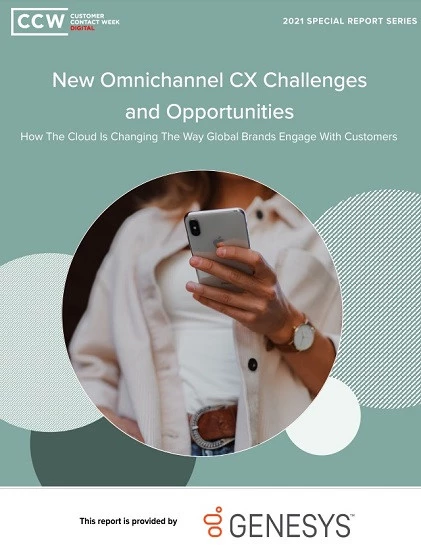American Express on Why You Should Focus on Selling Value, Not a Product
Last year, Amex rebranded as a "powerful backing" for small business owners
Add bookmarkWhen American Express sought to rebrand last year as the credit card of choice for small business owners, the company realized that it, along with almost every other financial institution, was drowning in a “sea of sameness,” said Chris Marino, director of paid media acquisition at Amex.
Banks evangelized short-term, product-focused sales pitches around rewards points, zero percent APR and overdraft protection but failed to communicate how the product fit into the customer’s lifestyle.
“One of the things that we wanted to do at American Express was we wanted to create opportunities to demonstrate long-term value,” Marino said at Social Media Week New York.
Understanding your customer’s challenges and meeting them there
Through its ‘See Business Differently’ rebrand and corresponding digital media campaign, the brand emphasized its service value proposition as a “powerful backing” for small business owners while they hustled, raised families, socialized and vacationed.
Shipments for inventory arrived late? Purchase protection allows you to get reimbursed by Amex rather than losing money or a high-value customer. The same holds true for any baggage lost while traveling, where you’re covered up to $2000 for each piece of checked baggage and $3000 for carry-ons.
“It’s what really helps to differentiate us as a company from our competitors, knowing that when you’re traveling, Amex is there to support you,” said Marino. “Knowing that when you have an issue with your business you have someone you can call who’s going to look out for you.”
By offering extraneous privileges beyond the credit card itself, like access to dedicated Centurion lounges at select airports for Platinum cardholders, Amex has entrenched itself as a service brand.
Advertising that starts with a customer need
To maintain its perception as a service brand, when conceptualizing the rebrand it was important to start with the customer’s needs, rather than the typical marketer’s train of thought, which starts with: What product do we want to sell and how do we make people want to buy it?
For small business owners, that means things like paying bills on time, managing inventory and shipping, and multitasking. A global study commissioned by the company showed that 57 percent of people living blended lives where personal and work life are intertwined, while two in three people feel they can achieve more because of this integration.
“We can’t just market to audiences as business owners or consumers when they’re living a very integrated lifestyle,” said Marino. “We really need to be able to tap into what is important to our audience and how are we giving them the powerful backing that they need to be successful, whether that is in their day job or in their personal life.”
Read more: 5 Business Use Cases for Speech Analytics You Probably Didn't Know About
One anthemic TV spot shows a new dad lying on the couch with his sleeping newborn nestled on his chest. He’s trying to apply for a business loan on his laptop without waking the baby. Seeing he’s been approved for a $25,000 line of credit, he sinks back into the cushions with a relieved sigh.
Another shows a dad on business travel video chatting with his daughter from an airport lounge while helping her with her math homework. But the most relatable short-form ad is of a woman sitting at a conveyor belt desk; she takes a bite of her salad, types on her laptop, gulps coffee, tabulates numbers on a calculator while each item moves ceaselessly across and under the desk and back again.
“How do we demonstrate in a 15-30 second ad all of the hats that a business owner wears? We thought a conveyor belt was a cool way to do that.”
For its display ads, Amex introduced a hand-drawn version of its famous card design with its customers at the center connoting its commitment to customer centricity.
Some campaigns don’t have an immediate RoI - and that’s OK
Marino cautioned that all brands need to “future-proof their business” by “evolving their messaging beyond commodities.”
For this reason, metrics for the campaign were centered not on customer acquisition but longer-term investments in consumer awareness and education to drive product consideration, a “very difficult metric to move,” according to Marino.
“Changing people’s perception about a product does take time so you need to ensure that your campaign gives you time.”
Consideration is measured by action. For instance, after seeing an ad, does a potential customer visit your website to learn more? Or do they undertake a Google search containing keywords relevant your campaign such as “small business loans” or search for your brand by name?
Data shows that only 2 percent of web traffic converts on the first visit to a brand’s website, so a more realistic aspiration for brands following a major marketing campaign is to grow their retargeting pool, not acquisitions.
Retargeting is a necessary evil understood by anyone who’s ever browsed the internet: after you visit a brand’s website or search for a particular item, digital ads from that brand follow you across the web. Retargeting helps brands reach the 98 percent of users who don’t convert right away.
“I think the reality is as acquisition marketers, more often than not we’re reaching the same audience with a high frequency over and over again,” admitted Marino. “But we really need to be able to reach that audience again and again before they start to consider your product or service.”













